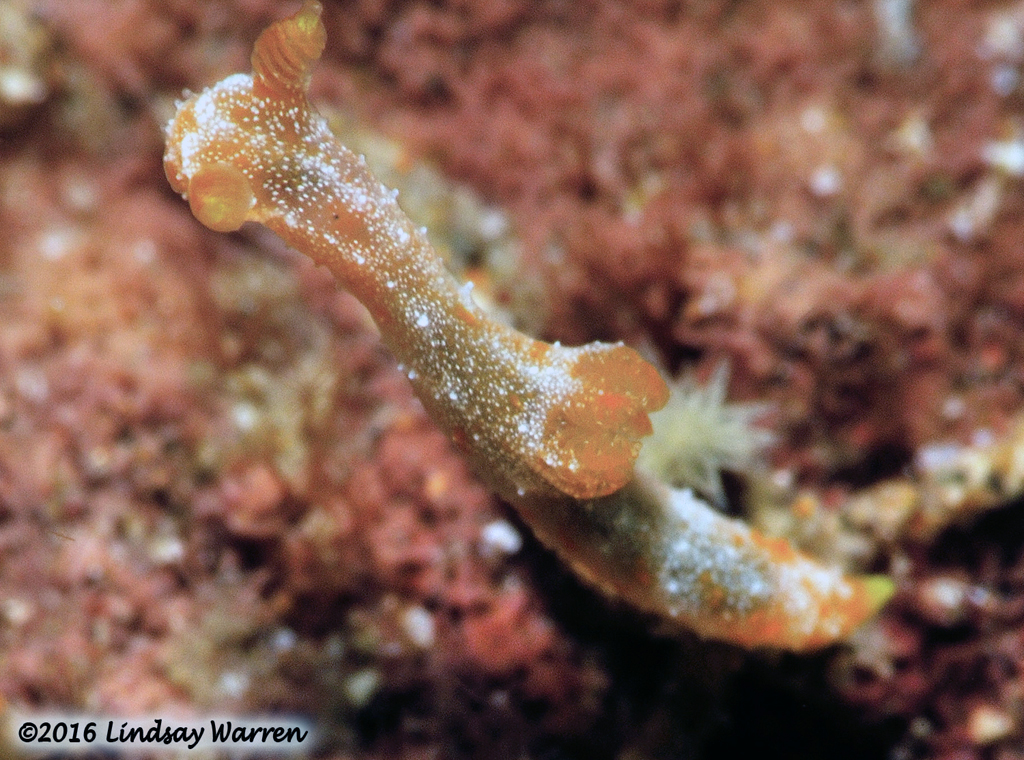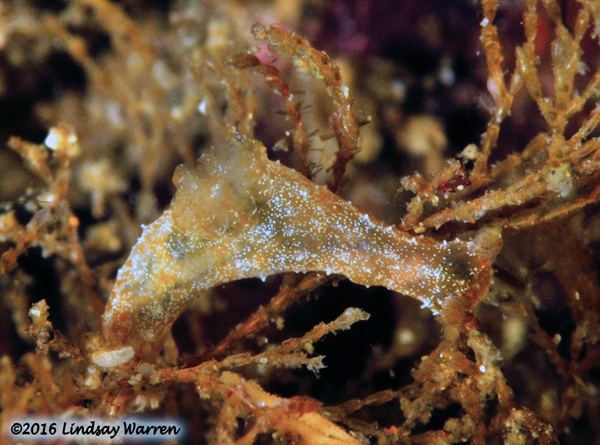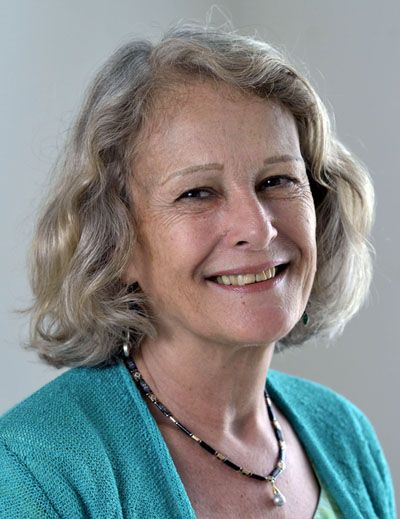 |
Polycera sp. 3
Image courtesy of Lindsay WarrenAnilao, Batangas, Philippines
Nikon D300s in Aquatica housing, 60 mm lens, Macromate wet diopter, 1 x Inon Z-240 strobe
Photo courtesy of Lindsay Warren
 | Polycera sp. 3 (undescribed
Members of the family Polyceridae are highly variable in their body form, but usually have a series of velar tentacles, one or more extrabranchial and extrarhinophoral appendages, as well as other lateral appendages. In Nudibranch and Sea Slug Identification. we show six species with similar short rounded tubercles covering the body. Their differences are subtle, mostly in coloration. Polycera sp. 3 is one of dozens of undescribed species we found in April at the Slugfest at the Crystal Blue Resort. It is orange with numerous white spots, more dense along the margins of the notum. The rhinophores and gill are also bight orange. With Lindz's two specimens shown here we can see the variation in color with this species, one of her specimens (left) being much lighter in color, almost cream rather than orange. This species like most Polycera, feeds on arborescent bryozoans, and has been documented from the Philippines, Japan and the Hawai'ian Islands. Join us next May for our Nudibranch Festival when we will be looking for this one again.
Sammamish, WA 98074 Aug, 2016 Send Dave email at davidwbehrens@gmail.com
|
Lindsay Warren

On the photographic front, the only reason she ever took it up was purely to document what she saw when diving. She started with a second hand Nikonos II, then a Nikonos III and later progressed to a Nikon F3 in an Aquatica housing only moving to digital in 2011. However she also became an accomplished photographer of land & air wildlife, human life events, of capturing special moments. And yet still her first love remains with marine life, especially opisthobranchs. Having dived in many areas of the world including UK, the Mediterranean, (Spain, France, Corsica), Red Sea, Bahamas, USA (Florida, California, Hawaii), St Lucia, Montserrat, South Africa, Madagascar, Brazil, Fiji, Tonga, French Polynesia, the Tukang Besi Archipelago, SE Sulawesi, Lindsay now spends most of her time in Indonesia diving in places such as Bali, Alor, Lembeh as well as Komodo, Flores, Sumbawa, but has also recently ventured further afield to the species-rich Philippines. As some of you probably already know, Lindsay spent several seasons in the mid to late 1990s in the Wakatobi National Park islands (Tukang Besi Archipelago, SE Sulawesi, Indonesia) with Operation Wallacea. I am sure it is there that she perfected her technique of non-invasive underwater photography, something I will never master. Lindsay is able to photograph with a 105 mm lens and Macromate wet diopter while hovering about the subject without actually settling down on the seascape. Once more, she is able to do this with macro and super macro subjects. The results are amazing as the reader can see. Lindsay was a prolific contributor to Bill Rudman's Sea Slug Forum when it was still an active site but she continues to look for and photograph opisthobranchs of all kinds sharing her finds with us.
Send Lindsay's email at lwarren@datonomy.co.uk
|

|
